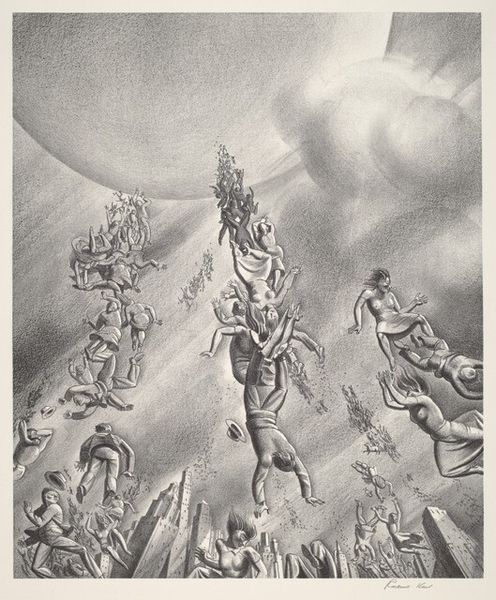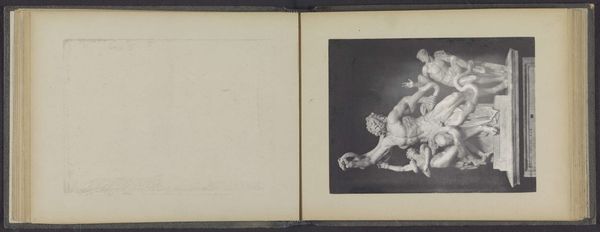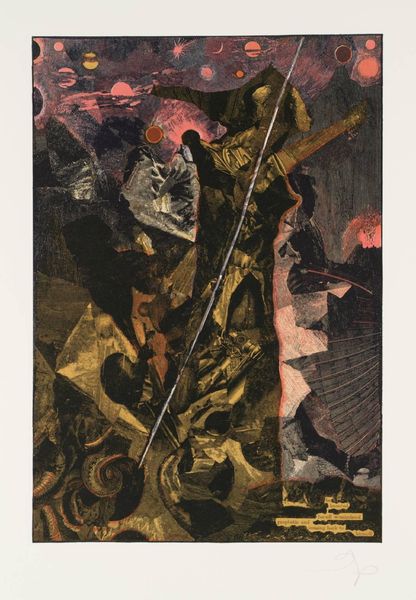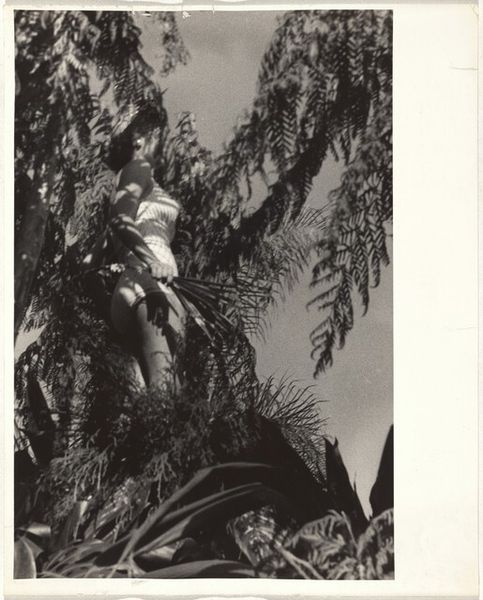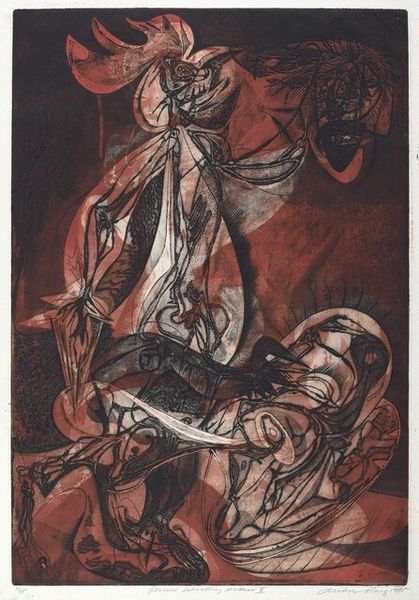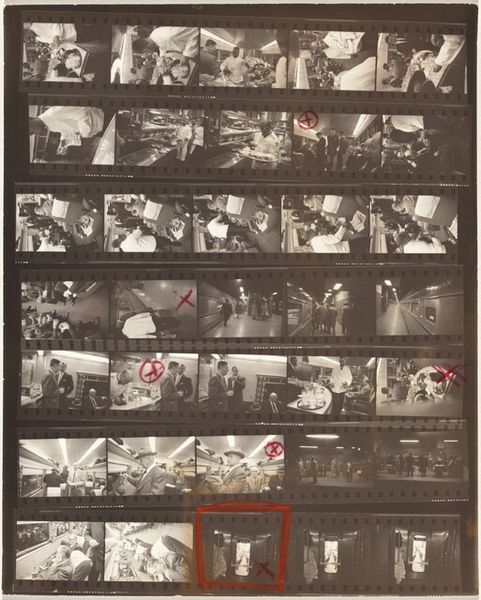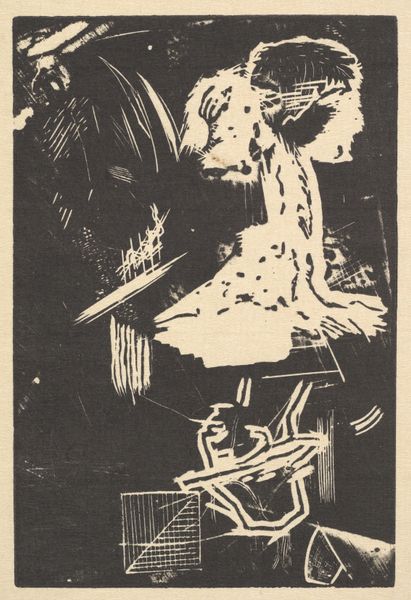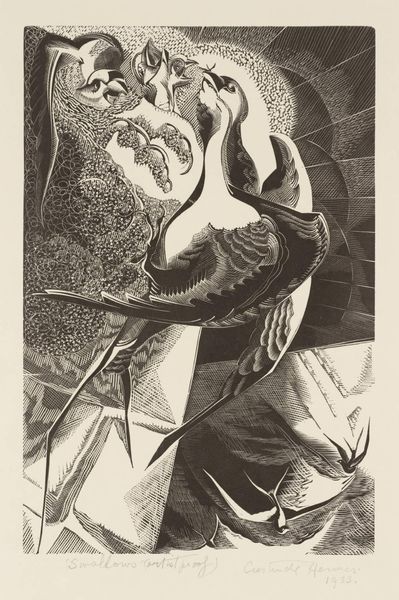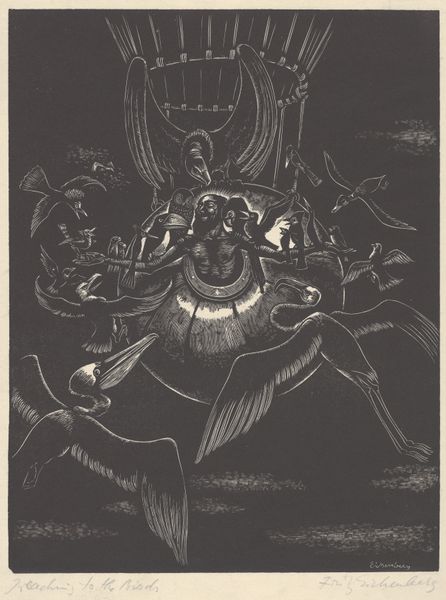
Copyright: Eduardo Paolozzi,Fair Use
Curator: This is Eduardo Paolozzi’s “Yours Till the Boys Come Home,” created in 1951. It’s a photomontage. Editor: The fragmented imagery gives off such a disconcerting vibe. What’s with the juxtaposition of pin-up photos and wartime scenes? It’s really making me question the relationships among glamour, violence, and the male gaze. Curator: Indeed, the structural arrangement itself is telling. The contrast you're pointing out disrupts any singular reading, doesn’t it? This piece embodies a distinct Postmodernist aesthetic through appropriation. Editor: Looking closely, I can see how Paolozzi’s manipulation of magazine cutouts creates such a distinct texture. It almost looks accidental, like it’s peeling apart. I mean, the physical process is so crucial here, isn’t it? The cheap reproduction, the cutting, pasting. Curator: Absolutely, but consider also the cultural resonance of the source materials. Paolozzi uses the images to highlight and subvert cultural ideals. Editor: I wonder about the layers of production involved in the artwork – it's reproduced images, physically assembled. It’s calling attention to the labor hidden behind these seductive images, how those bodies, machines, and experiences are assembled and presented for mass consumption. Curator: Precisely! He creates a complex semiotic interplay by layering found imagery. His arrangement demands a conscious unpacking of each signifier, ultimately deconstructing the viewer’s initial perceptions. The figures, for example, take on multiple meanings in the context. Editor: These visual fragments really challenge the separation between high art and low culture. The source materials and rough construction invite discussion about cultural anxieties that also relate to labor and the socio-political landscape. Curator: Well put. The convergence creates tension but invites contemplation regarding art, commerce, and meaning in postwar society. Editor: Absolutely. It encourages me to reconsider art production in relation to these mass-produced images and messages that affect the popular imaginary. Curator: It does prompt questions about the cultural and industrial mechanisms by which these ideas were reproduced, certainly, making it a deeply resonant work.
Comments
No comments
Be the first to comment and join the conversation on the ultimate creative platform.
